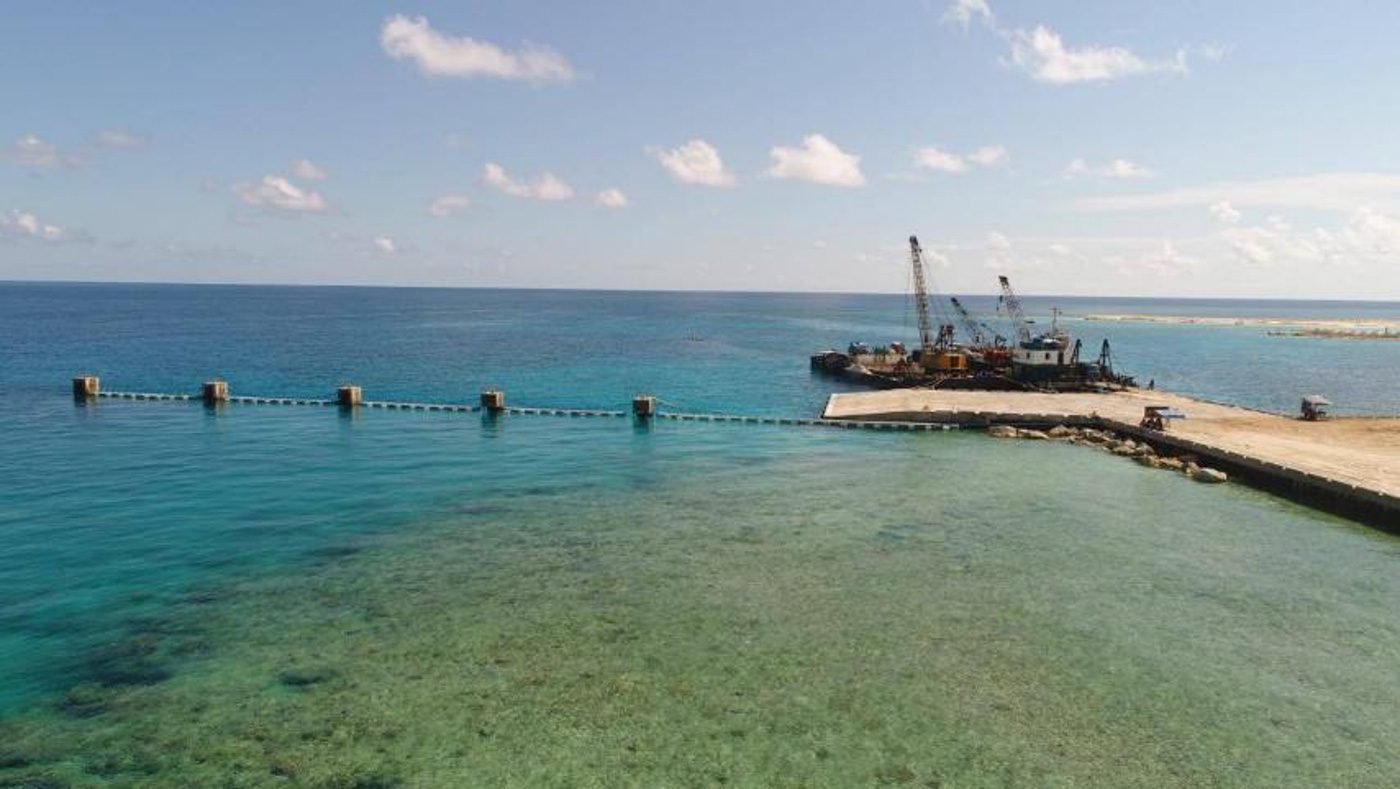SUMMARY
This is AI generated summarization, which may have errors. For context, always refer to the full article.

MANILA, Philippines – One of the first things that greet a traveler upon setting foot on foreign soil is a text message from their mobile service provider welcoming them to the country they’ve just arrived in, and offering roaming coverage.
When defense officials and reporters arrived on Pag-asa Island in the West Philippine Sea on Tuesday, June 9, that’s just what happened.
They received text messages saying “Welcome to China” and “Welcome to Vietnam,” even if they were on Philippine soil.
Pag-asa, internationally known as Thitu Island, lies 480 kilometers west of Puerto Princesa, Palawan. It is the largest of what the Philippines calls the Kalayaan Island Group, a chain of 9 islets it claims as territory among the broader group internationally known as the Spratlys.
Pag-asa Island is surrounded by other reefs claimed by other countries, nearest of which is Zamora, or Subi Reef, now an artificial island functioning as a military base for China, just 14 nautical miles away.
The West Philippine Sea, part of the broader area internationally called the South China Sea, has portions claimed by China, Vietnam, Malaysia, Brunei, and Taiwan.
The cellular signal from Philippine telcos on Pag-asa is weak or nonexistent. Only Smart has a facility on the island, but Defense Secretary Delfin Lorenzana said it is currently down.
The welcome text messages from Chinese and Vietnamese roaming service providers mean they have stronger signals on Pag-asa than their Philippine counterparts.

Tuesday’s voyage to Pag-asa, led by Lorenzana, was to inaugurate a newly finished beaching ramp. It will allow ships to dock on the island and directly offload passengers and cargo.
Before this, large vessels had to drop anchor half a kilometer away and transfer passengers and cargo to smaller boats to bring them to shore.
The government built the P268-million beaching ramp to make way for bigger construction projects on the island, such as paving its airstrip and building schools and houses for its residents.
Also in the plan, according to Lorenzana – cell sites, so that the civilian and military residents on the island wouldn’t feel so cut off from the rest of the Philippines anymore.
And also, so that no other country’s telcos can welcome visitors to the island as though it were anywhere but the Philippines. – Rappler.com
Add a comment
How does this make you feel?
There are no comments yet. Add your comment to start the conversation.